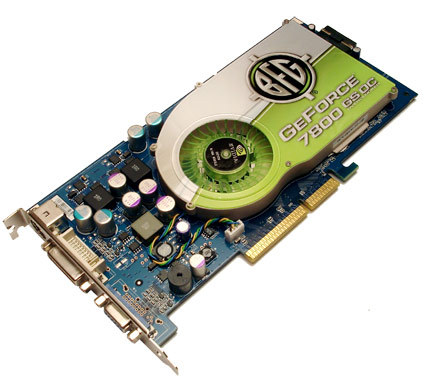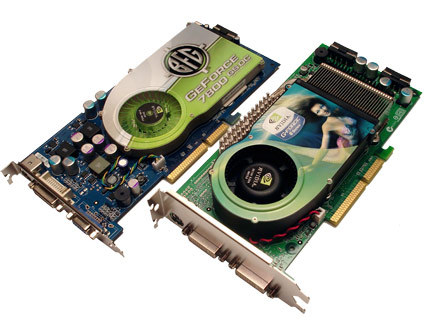The GeForce 7800GS Shows AGP Ain't Dead Yet
AGP Vs. PCIe - Bandwidth And Power
We are often asked if graphics card makers will make another AGP card or why don't they make them anymore. The short answer is that upgrading to a PCIe platform offers benefits that AGP cannot deliver, which is why card vendors moved from AGP to PCIe designs in the first place.
The first comes in the form of bandwidth. The bandwidth of a basic x1 PCI link is 5 Gb/s, while 4 Gb/s or 80% of that bandwidth is actually used to transmit data. This is because PCI Express uses what is called 8-bit/10-bit encoding. This means that 8-bit data Bytes are encoded into a 10-bit transmission, which maintains signal integrity. Also, PCIe is bi-directional, which means it can send one bit in each direction at the same time.
AGP does not share this functionality. While PCIe can send 250 MB/s per lane or 4 GB/s on x16 (in duplex 500 MB/s x 8 bit per Byte = 4 GB/s), AGP 8X only can transfer 266 MB/s in PCI mode and a maximum of 2.1 GB/s isochronous operation mode with AGP writes. The actual or guaranteed bandwidth for AGP 3.0 is a calculation of the number of read or write transactions times the data size (32, 64, 128, or 256 Bytes) divided by time with a maximum of 2.1 GB/s. Regardless of what mode in which it transfers the data, AGP is never as fast as a x16 PCIe solution.
The second limitation of the AGP 3.0 standard (AGP 8x) is power. All of the cards used in this review have extra four pin power sockets. The NVIDIA GeForce 7800GS and the ATI Radeon X850XTPE have one while the NVIDIA GeForce 6800 Ultra has two. The AGP 3.0 specifies power from the 3.3V, 5V, and 12V rails. The spec allowed for a maximum of 41.8W (6A from 3.3V, 2A from 5V, 1A from 12V = 41.8W, and an additional 1.24W could come from the 3.3V auxiliary at 0.375A).
By adding the four-pin connections, they extended the life of AGP cards as each supplied 6.5A or 110.5W from these right angle connections (12V + 5V or 17V x 6.5A = 110.5W). On the other hand, PCI Express can deliver 75W through the x16 connector and an additional 75W per six-pin connection.
Reference Material
Get Tom's Hardware's best news and in-depth reviews, straight to your inbox.

